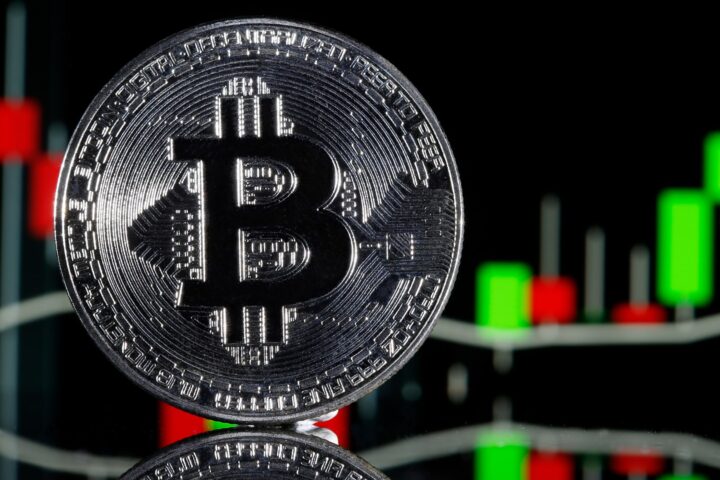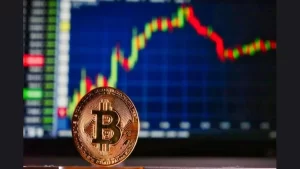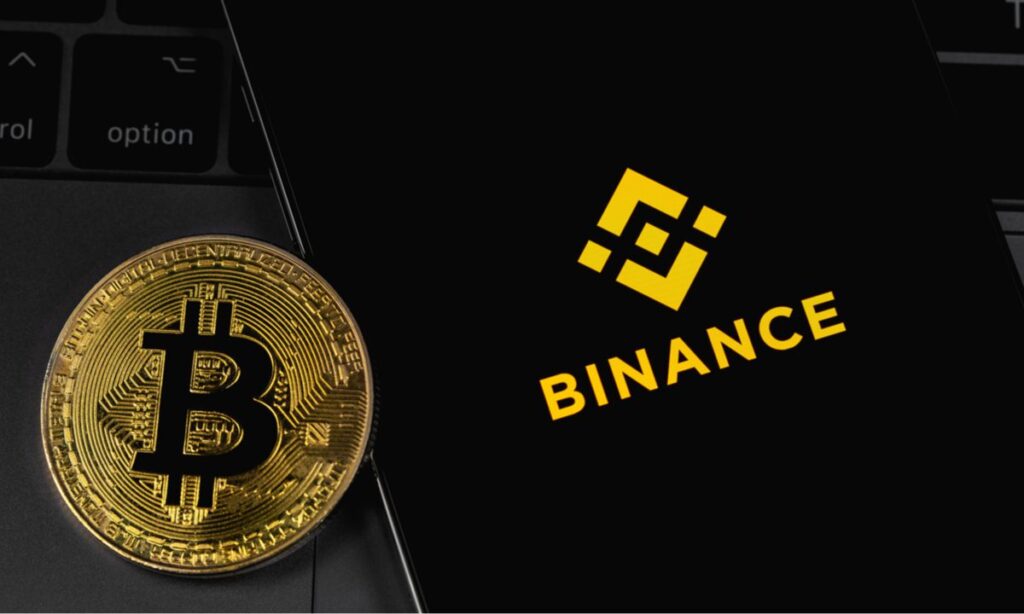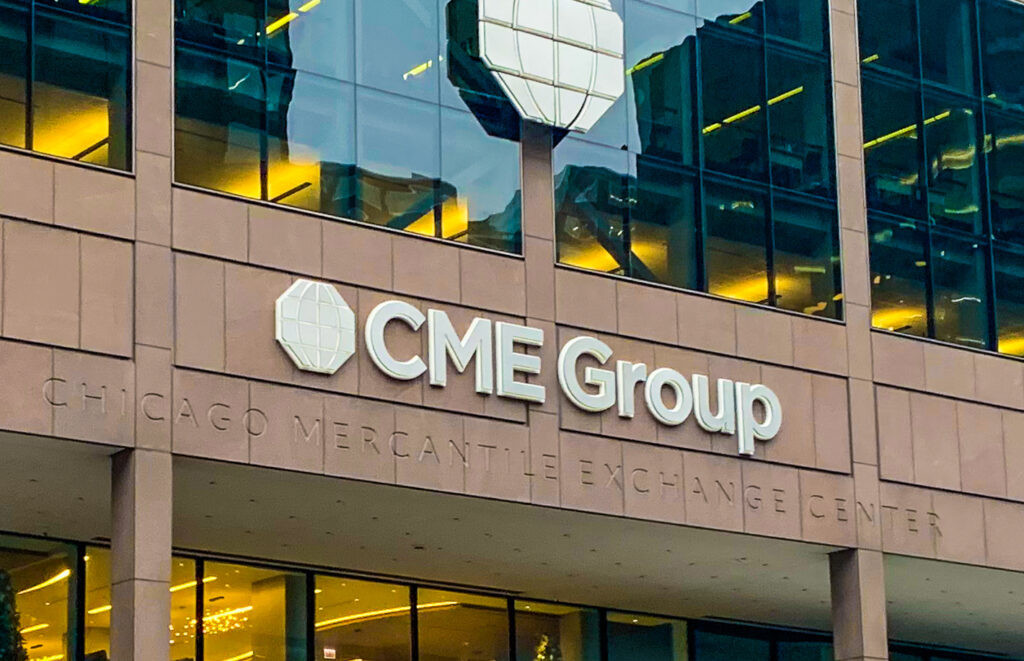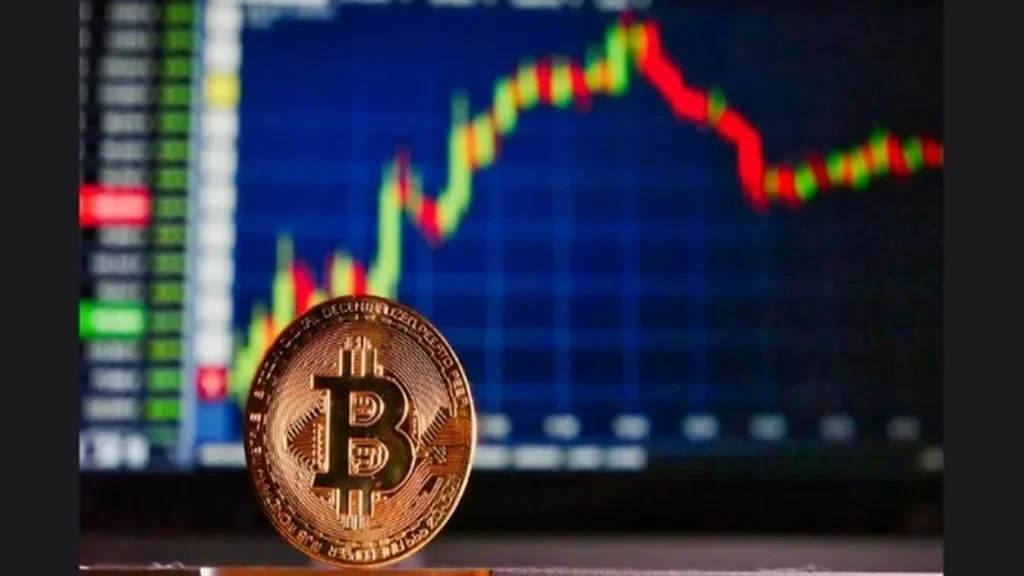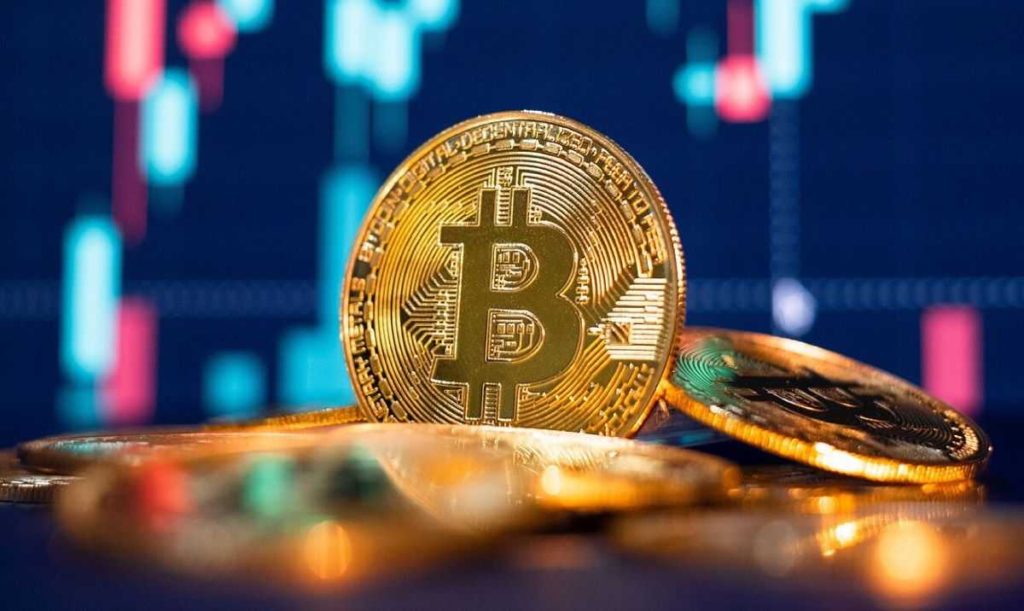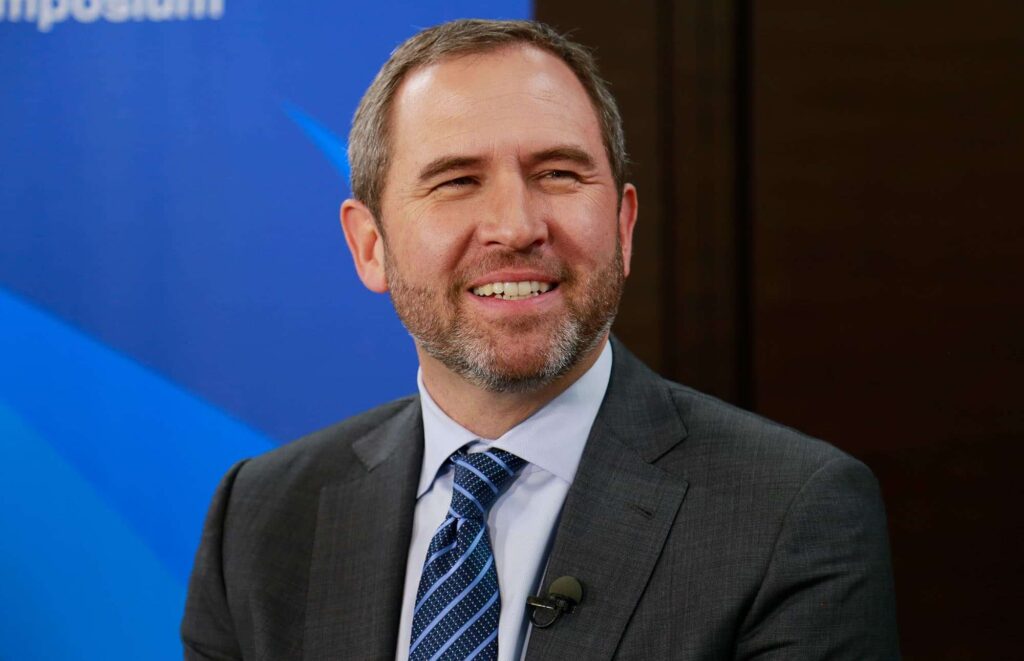The TON blockchain, integral to Telegram’s burgeoning advertising platform, is rapidly becoming a magnet for Web3 investors eager to leverage its vast monthly audience of 800 million active users.
Mirana Ventures has emerged as the most recent investor in the TON ecosystem, purchasing $8 million worth of the network’s Toncoin.
This funding will support continuous product innovation alongside the TON Foundation, Bybit, and Ethereum’s second-layer solution, Mantle Network.
In March 2024, the Telegram Ad Platform, powered by TON, was officially launched.
It offers global Telegram channel proprietors the chance to monetize through exclusive ad sales and revenue sharing in Toncoin.
Details shared with Cointelegraph reveal Bybit’s deepening engagement with the TON ecosystem over the past year, including a cashback initiative and staking with Toncoin.
These efforts generated over $22 million in trade volume from approximately 130,000 Telegram users. Bybit aims to leverage Telegram’s ad platform to access its massive user base.
Originally developed by Telegram, TON faced a legal hurdle with the U.S. Securities and Exchange Commission in May 2020, leading to Telegram stepping back from the project.
Subsequently, a collective of open-source developers took the reins, culminating in the formation of the TON Foundation by May 2021.
READ MORE: Nigerian Official Clarifies Misquoted $10 Billion Binance Fine Amid Tightening Crypto Regulations
TON Space, Telegram’s self-custodial wallet, enables users to manage Toncoin and collectibles within the app.
With the investment from Mirana Ventures, the TON Foundation is set to bridge Telegram users with the Mantle Network through the integration of TON-based MNT tokens, facilitating access to gamified campaigns and ad services within Telegram.
David Toh of Mirana Ventures emphasized the collaboration’s potential to foster widespread adoption of blockchain and wallet technologies in Telegram, viewing it as central to crypto and Web3 communications.
TON Foundation’s president, Steve Yun, mentioned the keen interest among industry entities to secure an early presence in the TON ecosystem, leveraging its connection to Telegram for strategic advantage.
Adding to the ecosystem’s growth, Animoca Brands has stepped in as a major TON validator through an investment and subsequent staking of Toncoin, though the exact amount remains undisclosed.
Yat Siu of Animoca shared with Cointelegraph the strategic nature of their investment, aimed at reinforcing their stake in the validator setup.
In an exclusive interview with Cointelegraph, Ivo Crnkovic-Rubsamen, the Chief Strategy Officer and Technical Lead for Trading at the dydx exchange, pinpointed algorithmic trading firms as the primary cause of recent disruptions at some of the world’s largest centralized cryptocurrency exchanges.
According to Crnkovic-Rubsamen, the intense retail interest and swift price movements have prompted these firms to significantly amplify their order and cancelation requests to maintain their positions in the market.
“It’s common for a trading firm to 20 times the output of orders and cancels at a very busy time,” he explained.
This surge in activity coincides with notable technical difficulties experienced by leading exchanges such as Binance, Coinbase, Kraken, and Bybit.
These issues emerged shortly after Bitcoin’s price surpassed $60,000 for the first time in more than two years on February 28.
Crnkovic-Rubsamen remarked that such situations are typical in bull markets when there’s a spike in retail interest and substantial price movements.
READ MORE: Bitcoin Withdrawals Surge as Exchanges See Largest Outflows in 5 Years Amid Price Rally
The fallout from these outages included Citron, an investment research firm, recommending a short sale on Coinbase stock, which then saw an 11.36% increase in its value within 24 hours, trading at $229.15 according to Google Finance.
Crnkovic-Rubsamen highlighted a significant difference between centralized exchanges (CEXs) and decentralized exchanges (DEXs), particularly in how they manage trading limits for market makers.
In CEXs, trading limits can be customized based on trust, leading to potential system overloads during bull markets.
This contrasts with DEXs, where trading limits are protocol-defined, eliminating favoritism and ensuring stability regardless of market conditions.
He also touched upon the reliability of centralized exchanges, acknowledging their efficiency and optimization under normal conditions but noting their vulnerability during peak periods.
“Centralized matching engines are awesome at performance, they’re super optimized and efficient, but when they go down, that’s it […] There is a reliability trade-off there,” Crnkovic-Rubsamen concluded, highlighting the inherent stability challenges faced by centralized platforms compared to their decentralized counterparts during times of intense market activity.
The U.S. Securities and Exchange Commission (SEC) has voiced concerns regarding Binance.US’s compliance with inquiries into customer asset custody and other fundamental aspects of an ongoing investigation.
According to a joint status report filed to a Washington, D.C. District Court on March 5, Binance.US, operated by BAM Trading Services, has not satisfactorily responded to SEC requests, particularly about the handling of customer assets.
The SEC requested the court’s assistance to expedite the discovery process, indicating a deadlock with Binance.US over crucial inquiries the company has either avoided or failed to address.
The SEC highlighted Binance.US’s reluctance to fulfill basic discovery obligations, including the provision of document attachments, metadata, and written responses.
A significant area of investigation for the SEC is whether Binance’s non-U.S. branches had access to the U.S. customers’ assets, specifically questioning Binance.US’s control over private keys and other access methods.
READ MORE: Hong Kong’s SFC Cracks Down on Fake Crypto Exchange Websites, Blocks Six Domains
In defense, Binance.US refuted the SEC’s allegations in the joint status report, claiming full compliance with the SEC’s extensive demands for information.
The company argued that the SEC’s accusations regarding customer assets were baseless and asserted that it had exceeded its legal responsibilities by submitting extensive documentation on its asset custody practices, including sworn statements, monthly reports, and facilitating inspections of shared custody devices.
This legal conflict follows the SEC’s lawsuit against Binance, its U.S. division, and founder Changpeng “CZ” Zhao in June of the previous year, accusing them of selling unregistered securities and improperly mixing customer funds with a different company owned by Zhao.
Additionally, on November 21, Binance settled with the U.S. Department of Justice for $4.3 billion over charges of breaching anti-money laundering and anti-terrorism financing laws.
As part of this settlement, Zhao admitted to money laundering offenses and awaits a sentencing hearing on April 3, which could result in up to 18 months of imprisonment.
Gary Gensler, the head of the U.S. Securities and Exchange Commission (SEC), has been vocal about his concerns regarding the cryptocurrency and blockchain industry, indicating a contentious atmosphere between regulatory bodies and the crypto sector in the United States.
This discord is further amplified by some U.S. lawmakers who oppose Gensler’s stance, challenging the SEC’s approach to regulating crypto assets.
This disparity within the government has created an uncertain environment for crypto projects based in the U.S., largely due to the ambiguous and fluctuating criteria used by the SEC to determine what constitutes a security, primarily relying on the outdated Howey test.
The heart of the issue lies in the mechanism of law creation in the U.S., which differs significantly from that in other countries, leaving the cryptocurrency industry in a precarious position.
Two Supreme Court cases, Loper vs. Raimondo and Relentless, Inc. vs the U.S. Dept of Commerce, are poised to potentially redefine federal agencies’ discretion in interpreting laws, a change that could significantly impact the crypto industry’s regulatory landscape.
At the center of this debate is the principle of Chevron deference, established by the 1984 Chevron vs. Natural Resources Defense Council case.
This legal doctrine allows federal agencies considerable leeway in interpreting laws, provided their interpretation is reasonable and Congress has not explicitly legislated on the matter.
Critics argue this deference has allowed agencies like the SEC to overextend their regulatory reach, especially in rapidly evolving sectors like cryptocurrency.
Coinbase CEO Brian Armstrong has been vocal about the detrimental effects of vague regulations on the crypto industry, pushing for clearer legislation.
The ongoing discussion around the Chevron deference and its potential recalibration by the Supreme Court could empower the public and their elected representatives to demand more precise laws governing digital assets.
The Supreme Court’s decision in the cases of Loper vs.
READ MORE: Bitcoin Surges to Record Highs Against the Euro and Multiple Currencies
Raimondo and Relentless, Inc. vs the U.S. Dept of Commerce could narrow the SEC’s interpretative authority, possibly aligning the regulation of cryptocurrencies more closely with Congressional intent.
Attorney Jeremy Hogan, known for his coverage of the Ripple vs. SEC case, highlights the significance of these cases for the crypto industry, suggesting that a ruling against Chevron deference could positively influence major litigation involving digital assets and the SEC.
However, Hogan also notes that the direct impact on the crypto industry might be limited since the SEC primarily relies on the Howey test for regulatory authority over digital assets.
Nonetheless, any mention of cryptocurrencies in the Supreme Court’s ruling could bolster arguments against the SEC’s regulatory overreach.
As the crypto industry continues to evolve, it’s increasingly intersecting with broader regulatory concerns, emphasizing the importance of vigilant and proactive engagement with legal developments.
This dynamic underscores the critical role of legal interpretations and the potential for future cases to shape the regulatory landscape for cryptocurrencies in the U.S.
El Salvador’s venture into Bitcoin has marked a significant milestone, with its holdings now valued over $150 million.
This comes after the country’s bold decision to adopt Bitcoin as legal tender in 2022, a move that has seen its investments grow substantially.
According to BitcoinTreasuries, the value of El Salvador’s Bitcoin stash has surged by $50 million beyond the initial purchase cost, illustrating a remarkable turnaround from previous market downturns to achieving historic financial highs.
Under President Nayib Bukele‘s directive, El Salvador has accumulated around 2,380 BTC, worth approximately $158.5 million, with the value peaking at $164.7 million in March, demonstrating a 53% profit margin from its cost basis of $44,300 per Bitcoin.
President Bukele, freshly reelected in February, has openly critiqued the mainstream media’s portrayal of El Salvador’s Bitcoin strategy on social platforms like X.
He pointed out the stark contrast in media coverage, highlighting the lack of attention now that the nation stands to gain significantly from its Bitcoin investments.
READ MORE: Investiva: Pioneering Excellence in CFD Trading with Innovation and Expertise
Bukele emphasized the enduring value of Bitcoin, irrespective of market fluctuations, while mentioning the success of their citizenship program as a major source of Bitcoin revenue, stating a firm stance against selling the digital currency.
El Salvador’s adoption of the Bitcoin standard sets it apart on the global stage, with no other nation-states yet to follow its lead despite speculation about potential adopters in South America and beyond.
Samson Mow, a prominent figure in the Bitcoin community and head of Jan3, remains optimistic about future nation-state adoption alongside corporate and institutional investments.
During his appearance on The Bitcoin Podcast, Mow identified nation-states, corporations, and institutional investors as crucial players in driving Bitcoin’s value upward, alongside retail investors contributing through smaller purchases, signaling a broad-based confidence in Bitcoin’s long-term trajectory.
Bayo Onanuga, a special adviser to the Nigerian president on information and strategy, has clarified reports surrounding the alleged imposition of a $10 billion fine on the cryptocurrency exchange Binance.
Contrary to earlier reports by the BBC, Onanuga stressed that the claims were a result of misquotation and misunderstanding.
He emphasized that there has been no finalized decision to levy such a fine against Binance and that his previous statements had been misrepresented.
Specifically, Onanuga mentioned that he had only discussed the possibility of a fine, indicating that nothing is set in stone as of now.
This development comes amidst increasing regulatory scrutiny of cryptocurrency exchanges in Nigeria, a move aimed at protecting the integrity of the Nigerian naira.
Binance, in response to the growing pressure, has discontinued the use of the naira in its peer-to-peer (P2P) trading services as of February 28.
The P2P platform, popular among Nigerian users since 2021, facilitates direct transactions between buyers and sellers without the need for an intermediary.
This service gained popularity following the Nigerian government’s ban on the crypto industry during the tenure of former President Muhammadu Buhari.
READ MORE: Bitcoin Trader Recovers $13,000 Mistaken NFT Purchase Thanks to Seller’s Generosity
The situation is compounded by the Central Bank of Nigeria’s (CBN) concerns over “suspicious flows” of funds through Binance’s Nigerian operations.
CBN Governor Olayemi Cardoso reported that in 2023 alone, $26 billion had been transacted through Binance from unverified sources and users, raising alarms over potential financial risks and the need for stringent oversight.
Further actions by the Nigerian government include the detention of two senior Binance officials in Abuja by the National Security Adviser’s office, highlighting the government’s intent to closely monitor and possibly regulate cryptocurrency exchanges to prevent undue speculation on the naira.
Despite these challenges, the CBN made a significant policy shift in December 2023 by lifting a two-year ban on banks’ involvement in crypto transactions.
This was accompanied by the issuance of guidelines for regulating virtual asset service providers.
Nigeria, having launched a central bank digital currency in 2022 and the naira-pegged cNGN stablecoin through the Africa Stablecoin Consortium in a regulatory sandbox in February, demonstrates a complex and evolving stance towards digital currencies.
The introduction of euro-denominated Bitcoin and Ether futures by CME Group is poised to significantly influence institutional cryptocurrency adoption within the eurozone.
Giovanni Vicioso, executive director at CME Group, shared insights with Cointelegraph, emphasizing the potential for broadening participation in the cryptocurrency markets.
According to Vicioso, the existing U.S. dollar-denominated cryptocurrency products have attracted a diverse group of participants, including traditional proprietary trading firms.
He expects these firms to also engage with the new euro-based products.
Vicioso revealed that the forthcoming euro-denominated futures have already sparked interest among various investors, including macro hedge funds, small asset managers, and dedicated crypto investors.
This move by CME, the leading derivatives marketplace comprising four exchanges, to introduce Micro Bitcoin and Micro Ether futures in euros, scheduled for March 18, marks a significant expansion in its cryptocurrency derivatives offerings.
The euro-denominated futures are anticipated to essentially function as a foreign exchange (FX) contract, attracting additional market participants.
Vicioso explained the mechanics, noting that investors could long the U.S. dollar contract while shorting the euro version, or vice versa, effectively creating an FX contract with Bitcoin and Ether.
The launch of Bitcoin-based exchange-traded products (ETPs) and the approval of the first spot Bitcoin ETFs in the U.S. on January 11 have already generated significant interest.
READ MORE: Crypto Whale Swaps PEPE for SHIB, Signalling Massive Bullish Momentum for Shiba Inu Token
This interest was underscored by the over $2 billion in combined daily volume recorded by the new spot Bitcoin ETFs, excluding the Grayscale Bitcoin Trust ETF conversion.
Vicioso pointed out that the anticipation and regulatory approval of U.S.-based spot Bitcoin ETFs have fueled an uptick in institutional interest in Bitcoin.
He highlighted the increase in Euro-denominated Bitcoin and Ether volumes since September and mentioned the growing customer interest in euro-denominated cryptocurrency products.
Furthermore, CME has seen a substantial increase in its average daily Bitcoin trading volume, which has nearly doubled from $1.6 billion in 2023 to over $3 billion in 2024.
Despite these advancements, Bitcoin’s price saw a slight decline of 0.62% in the 24 hours leading up to 1:15 pm UTC, trading at $62,383.
However, it has shown a significant increase of 22.50% on the weekly chart, indicating the cryptocurrency’s enduring appeal and volatility.
Bitcoin has recently achieved a significant milestone, setting a new record high against the euro, with its value surging to an unprecedented $65,000.
This remarkable achievement marks a new multi-year high for the cryptocurrency, highlighting its growing strength in the financial market.
On March 4, Bitcoin surpassed the 60,000-euro mark, a historical event as it reached this level against the euro for the first time.
TradingView data shows that Bitcoin hit 60,393 euros at 8:30 am UTC, witnessing a roughly 5% increase from its intraday low of 57,521 EUR.
Currently, Bitcoin’s value stands at 59,981 euros, boasting a significant 56% increase since the beginning of the year.
Before this achievement, Bitcoin had already been setting records, breaking the 53,000-euro mark on February 28, a record previously set in late September 2021.
This year, Bitcoin has been on a record-breaking spree against various fiat currencies, including the Chinese yuan (CNY), which is the largest fiat currency by market capitalization globally.
Late February saw Bitcoin surpass its previous all-time high against the CNY, reaching 467,506 CNY from an earlier high of around 414,000 CNY, as per Xe.com.
Balaji Srinivasan, a prominent angel investor and former Coinbase CFO, noted that as of February 28, Bitcoin had surpassed all-time highs in over 30 countries, including major economies like China, India, Japan, South Korea, and Argentina.
READ MORE: Massive Transfer of 3 Trillion Shiba Inu Tokens to Robinhood Wallet Sparks Crypto Frenzy
Despite these achievements, Bitcoin has yet to set new records against several major currencies, such as the U.S. dollar, British pound, Swiss franc, Brazilian real, and Mexican peso.
As it stands, Bitcoin is trading at $65,000, approximately 6% below its all-time high of $69,000 recorded on Coinbase in November 2021.
Sam Wouters, River Intelligence marketing head, identifies the Mexican peso as a particularly challenging target for Bitcoin, noting its current value at 1.1 million pesos, a 24% decrease from its peak of about 1.4 million pesos in November 2021.
The cryptocurrency’s recent success can be attributed to increased exposure following the launch of spot Bitcoin exchange-traded funds (ETFs) in the U.S. on January 11, 2024.
Since the launch, ETF issuers have acquired at least 340,000 BTC by March 1, not including significant sales by the Grayscale Bitcoin Trust ETF, further cementing Bitcoin’s growing influence in the global financial landscape.
Bitcoin’s movement away from exchanges is accelerating at a notable pace, with the cryptocurrency’s price striving to reach unprecedented highs.
James Van Straten, a research and data analyst at CryptoSlate, highlighted significant Bitcoin withdrawals from exchanges in a recent post, marking a trend reminiscent of 2021.
Despite the lack of mainstream investor return to cryptocurrency, Bitcoin reserves on exchanges are diminishing.
Van Straten, utilizing data from Glassnode, pointed out that on March 1, approximately $2 billion in Bitcoin was withdrawn from exchanges.
This activity, he remarked, was unprecedented.
“I don’t think I’ve quite seen anything like this before,” he said, noting that the day saw one of the largest Bitcoin withdrawals in more than five years, totaling over $2.3 billion.
Glassnode’s data suggests that the daily Bitcoin outflows around this period were comparable to those observed on June 28–29, 2021, a time of record withdrawals.
The influence of United States spot Bitcoin exchange-traded funds (ETFs) was notable, excluding around $200 million transferred to Coinbase Pro for custody.
READ MORE: US Energy Officials Reach Agreement with Texas Blockchain Council and Riot Platforms
Binance experienced approximately $400 million in outflows, with Coinbase handling the remainder. Van Straten found Binance’s outflows particularly intriguing, as they were not related to ETF activities.
According to Glassnode, the total Bitcoin assets held on major trading platforms dropped to 2,286,347 BTC ($142.5 billion) by March 2, reaching its lowest since March 2018 when the price of Bitcoin was around $8,000.
Further analysis by Crypto Dan from CrryptoQuant in a Quicktake market update revealed shifts in Bitcoin’s market composition.
The analysis highlighted an increase in activity from “younger” coins, while “older” ones, dormant for six months or more, began to circulate again.
This trend signals the arrival of new investors and suggests an impending influx of individual investors.
“New investors are flowing in, and in the near future we can expect the influx of many new ‘individual’ investors,” he summarized, indicating a sharp decline in the ratio that could herald the onset of a true bull market.
In a recent decision by United States District Court Judge Analisa Torres, a motion by the U.S. Securities and Exchange Commission (SEC) to delay the deadline for a critical submission in its ongoing litigation against Ripple Labs has been approved.
The legal documents, filed on March 1, have allowed the SEC additional time to submit discovery materials related to remedies against Ripple.
This extension sets new deadlines, giving the SEC until March 22 to file its opening brief, Ripple until April 22 to submit its opposition brief, and the SEC a final deadline of May 6, 2024, for a reply.
The case between the SEC and Ripple Labs has been a focal point of regulatory discussion since December 2020.
It was then that the SEC charged Ripple and its leading executives, CEO Brad Garlinghouse and co-founder Chris Larsen, with orchestrating a $1.3 billion unregistered securities offering via the sale of the XRP token.
The SEC argues that XRP qualifies as a security, necessitating adherence to stringent regulatory guidelines, a classification Ripple disputes by maintaining that XRP is not a security and criticizing the SEC for not providing adequate notice of its status.
This lawsuit has traversed various legal avenues and arguments, particularly focusing on the Howey test, a criterion to assess if a transaction constitutes an “investment contract” and thus, a security under U.S. law.
READ MORE: Elon Musk Takes Legal Action Against OpenAI Over Alleged Nonprofit Agreement Breach
The SEC posits that XRP satisfies the Howey test conditions, a stance contested by Ripple.
A pivotal moment in the litigation came in July 2023 when Judge Torres delivered a mixed verdict.
She ruled that XRP did not qualify as a security in its sales on digital asset exchanges through programmatic sales, marking a partial victory for Ripple Labs.
However, she also determined that sales of XRP to institutional investors did classify the token as a security, highlighting the nuanced and complex nature of the legal and regulatory challenges facing cryptocurrency and digital assets.
This ongoing case continues to be a significant point of interest for the cryptocurrency industry, regulatory bodies, and legal observers, as it may set important precedents for the classification and regulation of digital assets.

